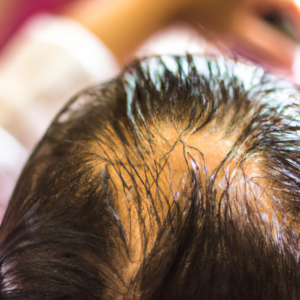When it comes to female hair loss, it is crucial to recognize that it is not solely an issue faced by men. Women also experience hair thinning and shedding, which can be emotionally distressing. By understanding the underlying causes and exploring appropriate treatment approaches, women can regain their confidence and maintain healthy hair.

Understanding Female Hair Loss
Female hair loss can be attributed to multiple factors, ranging from hormonal imbalances to genetic predispositions and external influences. By comprehending these causes, women can better identify the root cause of their hair loss and take appropriate measures to address it.
Common Causes of Female Hair Loss
- Hormonal Factors
Hormonal imbalances, such as fluctuations in estrogen and androgen levels, can contribute to hair loss in women. Conditions like polycystic ovary syndrome (PCOS) and menopause can disrupt the delicate hormonal balance and result in hair thinning.
- Genetic Predisposition
Just like in men, genetic factors play a role in female hair loss. Androgenetic alopecia, also known as female pattern hair loss, is a hereditary condition that leads to progressive hair thinning.
- Nutritional Deficiencies
Poor nutrition and deficiencies in vital nutrients, such as iron, zinc, biotin, and vitamins, can impact hair health and contribute to hair loss. A balanced diet and proper supplementation can help address these deficiencies.
- Stress and Lifestyle Factors
High levels of stress, inadequate sleep, and unhealthy lifestyle habits can disrupt the normal hair growth cycle and lead to excessive hair shedding. Managing stress and adopting a healthy lifestyle can improve hair health.
- Medical Conditions and Medications
Certain medical conditions, including thyroid disorders, autoimmune diseases, and scalp infections, can cause hair loss in women. Additionally, certain medications like chemotherapy drugs and anticoagulants may have hair loss as a side effect.
Types of Female Hair Loss
Understanding the different types of female hair loss treatment is crucial for accurate diagnosis and appropriate treatment. Let’s explore the most common types:
- Androgenetic Alopecia
Androgenetic alopecia is the most prevalent type of hair loss in women. It is characterized by a gradual thinning of hair, primarily on the top and crown areas of the scalp.
- Telogen Effluvium
Telogen effluvium refers to excessive hair shedding caused by significant stress or shock to the body. It is often temporary, and the hair usually regrows once the underlying cause is addressed.
- Alopecia Areata
Alopecia areata is an autoimmune condition that causes patchy hair loss on the scalp or other parts of the body. It occurs when the immune system mistakenly attacks hair follicles.
- Traction Alopecia
Traction alopecia results from prolonged tension or pulling on the hair, often due to tight hairstyles like ponytails, braids, or extensions. It primarily affects the hairline and areas subjected to frequent pulling.
Treatment Options for Female Hair Loss
Fortunately, several treatment options are available to help women combat hair loss and promote hair regrowth. Let’s explore some of the most effective approaches:
- Topical Solutions and Medications
Topical solutions containing minoxidil, a vasodilator, can help stimulate hair growth and slow down the progression of hair loss. Prescription medications, such as finasteride, may also be recommended for certain cases.
- Hair Transplantation
Hair transplantation involves transferring hair follicles from the donor area to the areas affected by hair loss. It is a surgical procedure that provides long-lasting results for women with advanced hair thinning.
- Platelet-Rich Plasma (PRP) Therapy
PRP therapy utilizes the growth factors present in a patient’s own blood to stimulate hair growth. The concentrated platelets are injected into the scalp, promoting the regeneration of hair follicles.
- Laser Therapy
Low-level laser therapy (LLLT) involves using specialized devices to emit red light onto the scalp, stimulating hair follicles and promoting hair growth. It is a non-invasive and painless treatment option.
- Nutritional Supplements
Certain nutritional supplements, such as biotin, vitamins, and minerals, can support hair health and growth. It is essential to consult with a healthcare professional to determine the appropriate supplements for individual needs.
Conclusion
Female hair loss can significantly impact a woman’s self-esteem and well-being. By understanding the causes of hair loss and the available treatment options, women can take proactive steps to address this issue. Whether through topical solutions, surgical procedures, or innovative therapies, there are effective solutions to help women regain their confidence and achieve healthy, luscious hair.